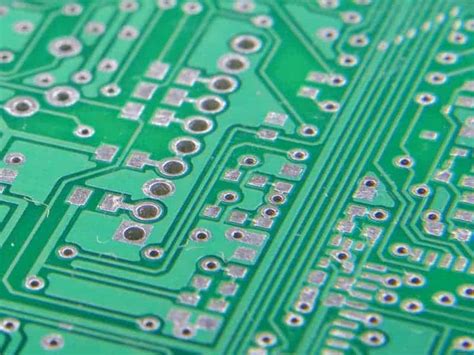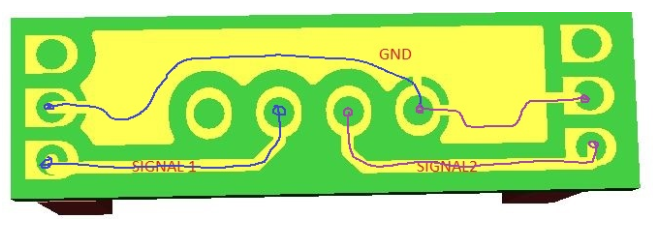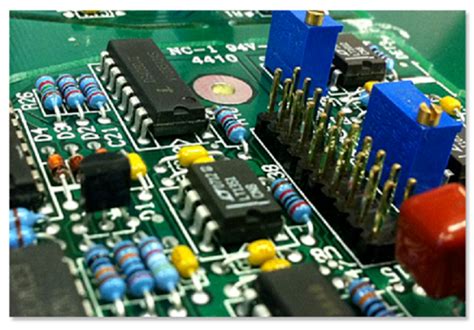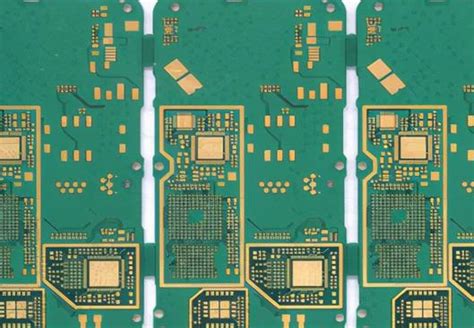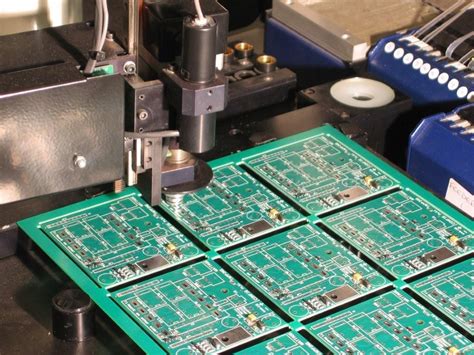Flex pcb depaneling
Advantages Of Flex PCB Depaneling In Modern Electronics Manufacturing
Flex PCB depaneling has emerged as a pivotal process in modern electronics manufacturing, offering a multitude of advantages that enhance both the efficiency and quality of electronic products. As the demand for smaller, more complex, and highly reliable electronic devices continues to grow, manufacturers are increasingly turning to flexible printed circuit boards (PCBs) to meet these requirements. The depaneling process, which involves separating individual circuits from a larger panel, is crucial in ensuring the integrity and functionality of these flexible PCBs.
One of the primary advantages of flex PCB depaneling is its ability to accommodate the intricate designs and delicate materials used in modern electronics.
Unlike traditional rigid PCBs, flexible PCBs are made from materials that can bend and twist, allowing for more compact and versatile device designs. The depaneling process must therefore be precise and gentle to avoid damaging the circuits. Advanced depaneling techniques, such as laser cutting, offer the precision needed to handle these delicate materials without causing stress or deformation, ensuring that the final product maintains its intended performance characteristics.
Moreover, flex PCB depaneling contributes significantly to the overall efficiency of the manufacturing process.
By utilizing automated depaneling systems, manufacturers can achieve higher throughput and consistency, reducing the time and labor costs associated with manual depaneling methods. Automation not only speeds up the process but also minimizes the risk of human error, leading to higher yields and less waste. This efficiency is particularly important in high-volume production environments where time and cost savings can have a substantial impact on profitability.
In addition to efficiency, the quality of the final product is greatly enhanced through advanced depaneling techniques.
The precision offered by modern depaneling methods ensures clean and accurate cuts, which are essential for maintaining the electrical and mechanical integrity of the circuits. This is especially critical in applications where reliability is paramount, such as in medical devices, aerospace, and automotive electronics. By ensuring that each circuit is free from defects and potential points of failure, manufacturers can deliver products that meet stringent quality standards and perform reliably in demanding conditions.
Furthermore, flex PCB depaneling supports the trend towards miniaturization in electronics.
As devices become smaller and more compact, the need for flexible PCBs that can fit into tight spaces and conform to unique shapes becomes more pronounced. Depaneling processes that can handle these complex designs without compromising the integrity of the circuits are essential in enabling the production of next-generation electronic devices. This capability not only supports innovation but also allows manufacturers to meet the evolving needs of consumers who demand more functionality in smaller packages.
In conclusion, flex PCB depaneling plays a crucial role in modern electronics manufacturing by providing the precision, efficiency, and quality needed to produce advanced electronic devices. As the industry continues to evolve, the importance of effective depaneling processes will only grow, driving further advancements in technology and manufacturing techniques. By embracing these innovations, manufacturers can ensure that they remain competitive in a rapidly changing market, delivering products that meet the highest standards of performance and reliability.
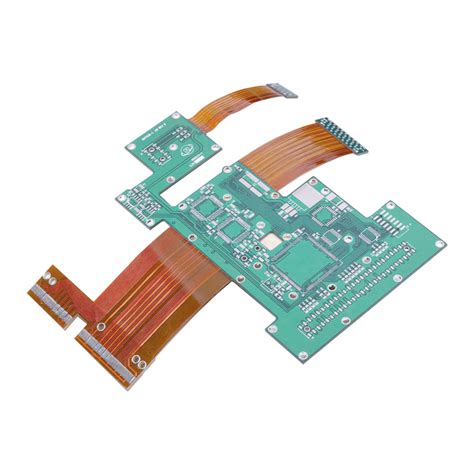
Techniques And Tools For Efficient Flex PCB Depaneling
Flex PCB depaneling is a critical process in the manufacturing of flexible printed circuit boards, which are increasingly used in various electronic applications due to their lightweight, compact, and versatile nature. As the demand for these flexible circuits grows, so does the need for efficient and precise depaneling techniques. This process involves separating individual circuit boards from a larger panel, a step that requires careful consideration to maintain the integrity and functionality of the circuits. Various techniques and tools have been developed to achieve efficient depaneling, each with its own advantages and challenges.
One of the most common methods for flex PCB depaneling is laser cutting.
This technique utilizes a high-powered laser to precisely cut through the material, offering a high degree of accuracy and minimal mechanical stress on the boards. Laser cutting is particularly advantageous for complex or intricate designs, as it can easily navigate tight corners and small features. Moreover, it produces clean edges and reduces the risk of damaging the delicate components on the board. However, the initial investment in laser cutting equipment can be substantial, and the process may require careful calibration to ensure optimal results.
In addition to laser cutting, mechanical routing is another widely used technique for depaneling flex PCBs.
This method involves using a high-speed spindle with a routing bit to cut through the panel. Mechanical routing is well-suited for thicker materials and can handle a variety of board shapes and sizes. It is also relatively cost-effective compared to laser cutting. However, mechanical routing can introduce mechanical stress and potential damage to the boards if not properly managed. To mitigate these risks, manufacturers often employ specialized fixtures and support systems to stabilize the boards during the routing process.
Another technique gaining popularity is die cutting, which uses a custom-designed die to stamp out the individual boards from the panel.
Die cutting is highly efficient for high-volume production runs, as it can quickly and consistently produce large quantities of boards with minimal waste. This method is particularly beneficial for simple board designs with uniform shapes. However, the initial cost of creating the custom die can be high, and the process may not be as flexible as other methods when it comes to design changes or variations.
Waterjet cutting is an alternative method that uses a high-pressure stream of water mixed with an abrasive substance to cut through the material.
This technique is advantageous for its ability to cut through a wide range of materials without generating heat, thus minimizing the risk of thermal damage to the boards. Waterjet cutting is also environmentally friendly, as it does not produce harmful fumes or require the use of chemicals. Nevertheless, the process can be slower than other methods and may require additional steps to ensure the boards are thoroughly dried and cleaned after cutting.
In conclusion, the choice of depaneling technique for flex PCBs depends on various factors, including the complexity of the board design, production volume, and budget constraints. Each method offers unique benefits and challenges, and manufacturers must carefully evaluate their specific needs to select the most appropriate approach. As technology continues to advance, new tools and techniques are likely to emerge, further enhancing the efficiency and precision of flex PCB depaneling processes.

Challenges And Solutions In Flex PCB Depaneling Processes
Flex PCB depaneling, a critical step in the manufacturing process of flexible printed circuit boards, presents a unique set of challenges that require innovative solutions to ensure efficiency and precision. As the demand for smaller, more complex electronic devices continues to grow, the need for advanced depaneling techniques becomes increasingly important. The inherent flexibility and thinness of flex PCBs, while advantageous for their end-use applications, pose significant difficulties during the depaneling process. These challenges primarily stem from the delicate nature of the materials used and the intricate designs of the circuits.
One of the primary challenges in flex PCB depaneling is maintaining the structural integrity of the board while separating it from the panel.
Traditional mechanical methods, such as punching or routing, can exert excessive stress on the flexible substrate, leading to potential damage or deformation. This is particularly problematic given the thinness of flex PCBs, which can be as little as a few micrometers thick. To address this issue, manufacturers have increasingly turned to non-contact methods, such as laser depaneling, which offer a more precise and gentle approach. Laser depaneling utilizes a focused beam of light to cut through the material without physical contact, thereby minimizing the risk of mechanical stress and damage.
Another significant challenge is the need to maintain high levels of precision and accuracy during the depaneling process.
Flex PCBs often feature complex, densely packed circuit patterns that require exacting cuts to avoid damaging the circuitry. Any deviation from the intended cut line can result in electrical failures or reduced performance of the final product. Advanced laser systems equipped with high-resolution cameras and sophisticated software have been developed to address this challenge. These systems can accurately align the laser with the intended cut path, ensuring that each cut is made with the utmost precision.
In addition to precision, the speed of the depaneling process is a critical factor in the overall efficiency of PCB manufacturing.
As production volumes increase, manufacturers must find ways to depanel flex PCBs quickly without sacrificing quality. Innovations in laser technology, such as the use of ultrafast lasers, have significantly improved the speed of the depaneling process. These lasers can make rapid, precise cuts, allowing for higher throughput and reduced cycle times.
Furthermore, the environmental impact of the depaneling process is an increasingly important consideration.
Traditional methods can generate significant amounts of waste and require the use of harmful chemicals. In contrast, laser depaneling is a cleaner process that produces minimal waste and does not rely on chemical agents. This not only reduces the environmental footprint of the manufacturing process but also aligns with the growing demand for sustainable production practices.
In conclusion, while flex PCB depaneling presents several challenges, advancements in technology have provided effective solutions that enhance the precision, speed, and sustainability of the process. By adopting non-contact methods such as laser depaneling, manufacturers can overcome the limitations of traditional techniques and meet the demands of modern electronic device production. As technology continues to evolve, it is likely that further innovations will emerge, offering even greater efficiencies and capabilities in the depaneling of flexible printed circuit boards.

Innovations In Flex PCB Depaneling Technology
Flex PCB depaneling, a critical process in the manufacturing of flexible printed circuit boards, has witnessed significant innovations in recent years. These advancements are driven by the increasing demand for miniaturized electronic devices and the need for more efficient and precise manufacturing techniques. As the electronics industry continues to evolve, the importance of flex PCB depaneling cannot be overstated, as it directly impacts the quality, performance, and reliability of the final product.
Traditionally, mechanical methods such as punching and routing were employed for depaneling flex PCBs.
However, these methods often resulted in mechanical stress and potential damage to the delicate circuits. Consequently, the industry has shifted towards more advanced techniques that minimize these risks. One such innovation is laser depaneling, which has gained popularity due to its precision and non-contact nature. Laser depaneling utilizes high-energy laser beams to cut through the substrate, offering a clean and precise cut without exerting physical force on the board. This method significantly reduces the risk of damage and ensures high-quality edges, which is crucial for maintaining the integrity of the circuits.
Moreover, laser depaneling is highly adaptable to various designs and materials, making it an ideal choice for the increasingly complex and diverse range of flex PCBs.
The ability to program laser systems for intricate patterns allows manufacturers to meet the specific requirements of different applications, from consumer electronics to medical devices. Additionally, the non-contact nature of laser depaneling minimizes the risk of contamination, which is particularly important in industries where cleanliness is paramount.
In addition to laser technology, other innovations have emerged to enhance the depaneling process.
For instance, the development of advanced vision systems has improved the accuracy and efficiency of depaneling operations. These systems use high-resolution cameras and sophisticated algorithms to precisely align the cutting tools with the PCB layout, ensuring that each cut is made with utmost precision. This not only enhances the quality of the final product but also reduces material waste, contributing to more sustainable manufacturing practices.
Furthermore, the integration of automation and robotics in depaneling processes has revolutionized the industry.
Automated systems can handle large volumes of PCBs with consistent precision and speed, significantly increasing production efficiency. Robotics also allows for greater flexibility in handling different PCB designs and sizes, enabling manufacturers to quickly adapt to changing market demands. The combination of automation and advanced depaneling technologies has resulted in a more streamlined and cost-effective manufacturing process, ultimately benefiting both manufacturers and consumers.
As the demand for smaller, more powerful electronic devices continues to grow, the need for innovative depaneling solutions will only intensify. The ongoing research and development in this field promise even more advanced technologies that will further enhance the precision, efficiency, and sustainability of flex PCB manufacturing. In conclusion, the innovations in flex PCB depaneling technology are not only meeting the current demands of the electronics industry but are also paving the way for future advancements. By embracing these cutting-edge techniques, manufacturers can ensure the production of high-quality, reliable, and efficient electronic devices that meet the ever-evolving needs of consumers worldwide.

